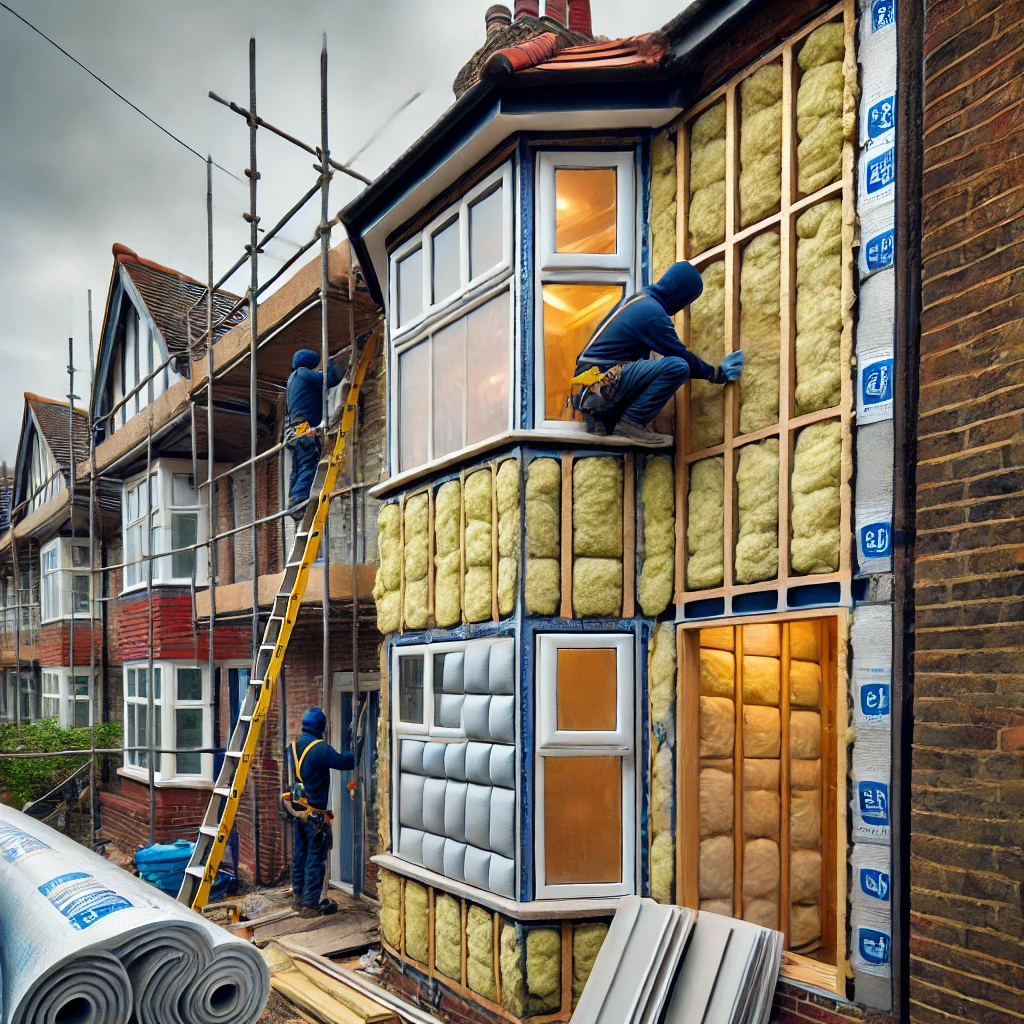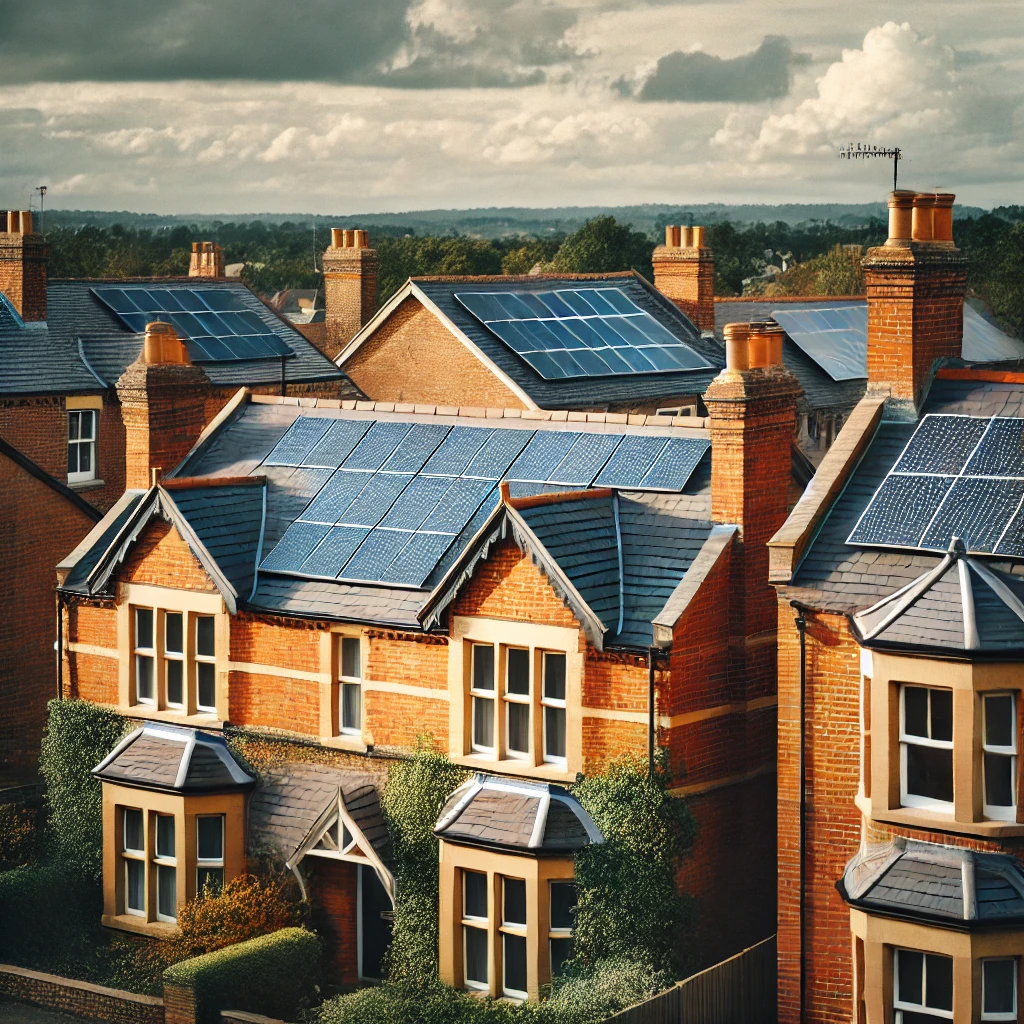As the UK accelerates its journey towards achieving its net-zero targets, the retrofitting of buildings is becoming an essential part of reducing carbon emissions and enhancing energy efficiency. Property owners and housing associations are faced with a crucial decision: should they focus on upgrading the building fabric, such as insulation and air-tightness, or would it be more effective to opt for solar retrofitting, which generates renewable energy?
Both fabric-first approaches and solar panel installations have their merits, but recent trends show that solar energy is emerging as the more scalable and immediate solution, especially for large-scale property portfolios, such as social housing. This article explores why solar retrofitting could provide greater returns, both in terms of carbon emissions reduction and financial savings.
What is the Fabric-First Approach?
The fabric-first approach aims to improve a building’s structural elements such as insulation, glazing, and air-tightness to reduce energy consumption. The concept is based on minimising the energy required for heating, cooling, and lighting by preventing energy loss through poorly insulated or outdated structures.
While this energy-saving retrofit strategy is well-intentioned, the practical challenges, especially when implemented across large property portfolios, can limit its effectiveness.

Challenges of the Fabric-First Approach
- High upfront costs: Enhancing insulation, upgrading windows, and improving air-tightness can require substantial initial investment. Older buildings, in particular, may need more invasive and expensive work to bring them up to modern standards.
- Slow return on investment (ROI): The energy savings generated from these improvements are spread over many years, often taking more than a decade to recoup the initial outlay.
- Limited scalability: The fabric-first approach is labour-intensive and can take a significant amount of time to complete, making it harder to roll out across multiple buildings quickly, particularly in the case of social housing or other large property portfolios.
- No energy generation: While fabric upgrades reduce energy demand, they do not generate any renewable energy. Therefore, buildings remain dependent on external energy sources, which may not be green.
These challenges make the fabric-first approach less appealing for property owners and housing associations looking for scalable and quicker solutions to building decarbonisation.
Why Solar Retrofitting Offers a Scalable Solution
In contrast, solar retrofitting presents a more scalable and immediate option for property owners and social housing providers. By installing solar panels on rooftops, buildings can generate their own renewable energy, cutting their reliance on external sources and dramatically reducing carbon emissions.
Advancements in energy storage systems have made solar energy even more practical, enabling buildings to store surplus energy generated during the day for use when needed, further maximising the efficiency of solar installations.

Key Benefits of Solar Retrofitting
- Renewable energy generation: Solar panels enable buildings to produce their own clean, renewable energy, helping meet the UK’s net-zero targets. This reduces reliance on external, non-renewable energy sources and decreases a building’s overall carbon footprint.
- Lower energy bills: Once installed, solar panels can significantly reduce electricity costs for both building owners and tenants. With energy prices on the rise, the savings generated from solar retrofitting can become more pronounced over time.
- Scalability: Solar systems can be rolled out across entire property portfolios relatively quickly. Digital platforms like PowerMarket have streamlined the planning, financing, and management processes, making solar installations easier to implement at scale.
- Quicker return on investment: The ROI for solar retrofitting is typically faster than for fabric-first improvements. With the declining cost of solar panels and government initiatives like the Smart Export Guarantee (SEG), payback periods can be as short as 3 to 5 years, depending on system size and location.
Unlike fabric-first retrofits, which focus solely on reducing energy demand, solar retrofitting tackles both the cost and supply of energy, providing a more comprehensive and scalable solution for carbon emissions reduction.
The Hybrid Approach: Combining Solar and Fabric
It’s important to note that solar retrofitting and fabric-first strategies do not have to be mutually exclusive. In fact, many buildings could benefit from a hybrid approach that combines both. For instance, a building with improved insulation and solar panels can maximise energy efficiency while generating its own renewable energy to meet its remaining energy demands.
However, when considering where to start, solar retrofitting provides more immediate and measurable impacts. For organisations with limited budgets or large portfolios, installing solar panels first allows for a faster reduction in reliance on fossil fuels, lower energy bills, and the creation of a new revenue stream. Over time, this can free up funds to invest in fabric improvements where needed.
Conclusion
When considering the best approach to retrofitting for decarbonisation, solar energy stands out as a highly practical, scalable, and cost-effective solution. While upgrading a building’s fabric is undoubtedly important for enhancing energy efficiency, the immediate impact, financial benefits, and renewable energy generation that solar retrofitting offers make it an ideal first step in the decarbonisation journey.
For property owners and housing providers, particularly those managing large portfolios like social housing, solar energy systems deliver both environmental and economic returns from the moment they are installed. Unlike fabric upgrades, which focus solely on reducing energy demand, solar installations generate clean energy, contributing directly to energy independence and long-term sustainability.
FAQs: Common Questions About Retrofitting with Solar
- Is solar energy effective in the UK’s climate?
Yes, solar installations are highly effective in the UK, even with its variable climate. Modern solar panels are designed to work efficiently in cloudy conditions, and energy storage systems allow excess energy to be stored for later use. - How much can I save on energy bills with solar panels?
The savings depend on the size of the solar energy system, but on average, solar retrofits can reduce electricity bills by up to 70%. The inclusion of energy storage further optimises these savings. - What is the lifespan of solar panels?
Solar panels typically last 25–30 years with minimal maintenance. Over this period, they continue to generate renewable energy, contributing to reduced electricity costs and lower carbon emissions. - How long does it take to see a return on investment with solar?
The payback for solar retrofitting varies but generally ranges from 3 to 5 years, depending on factors like installation costs, energy savings, and available government incentives.
About PowerMarket
PowerMarket is the all-in-one platform transforming commercial real estate with solar energy. Designed to simplify solar adoption, it helps businesses decarbonise and turn their properties into revenue-generating assets.
Through PowerMarket, users can plan, install, finance, and trade solar energy effortlessly on a single, user-friendly platform. It streamlines the entire process, saving over 90% of the time and resources typically required.
Recognised by the Financial Times as a leading energy-tech venture in Europe and supported by Oxford University and the European Space Agency, PowerMarket is at the forefront of democratising solar.
